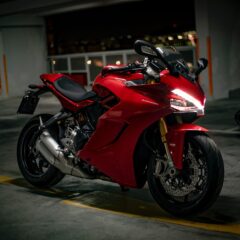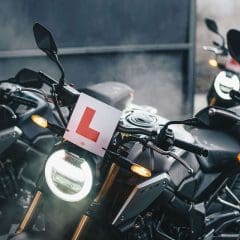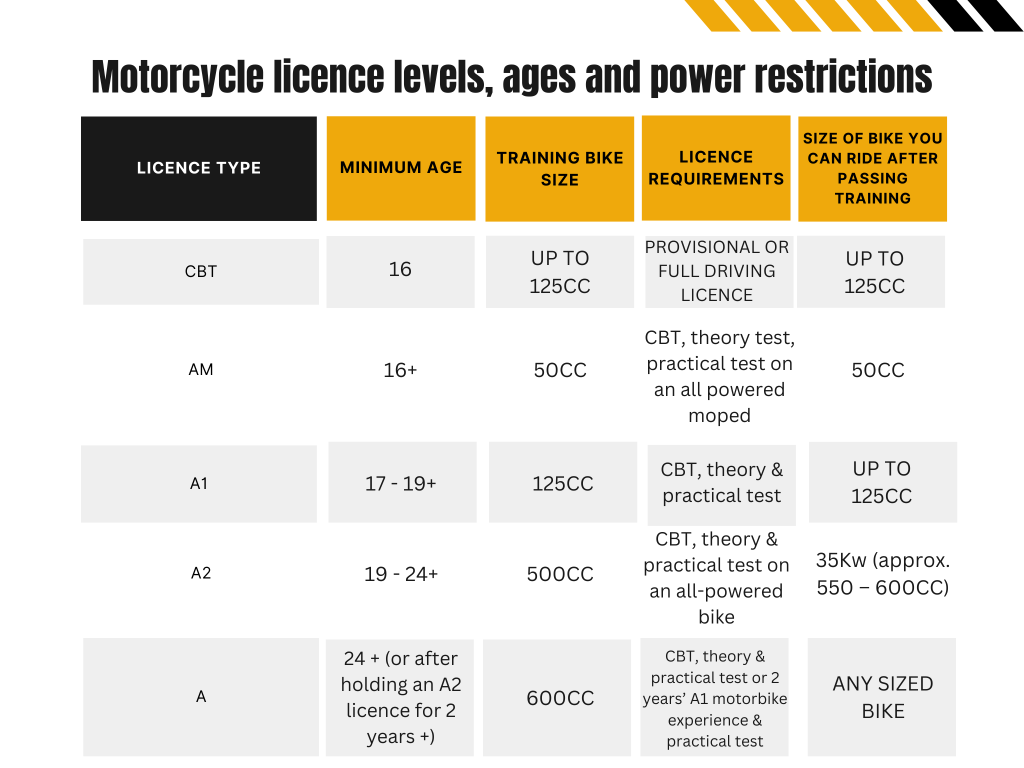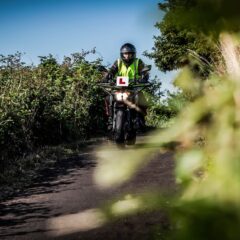
7 Top Motorcycle Accessories
With Christmas just around the corner, you might be wondering what to get your favourite motorcycle enthusiast or even a little something for yoursel...
 Phoenix Motorcycle Training LTD
Phoenix Motorcycle Training LTD
 Phoenix Motorcycle Training LTD
Phoenix Motorcycle Training LTD

Dreams of riding down an endless road on two wheels are worth chasing. The excitement, freedom, and fun you’ll have on a motorcycle is second to none. Getting a UK license may seem complex, but it’s easier than you’d think. The motorcycle training for a license process meets you where you are.
This blog breaks it all down so you can confidently book your license training and hit the road faster. From the first training steps to claiming your full motorcycle license and beyond, we’ve got you covered. And once you’ve got your license, we can help you get the most from it with advanced ProSkills motorcycle training too.
Ready to chase down those motorcycling dreams and claim a new kind of freedom? Let’s go.
There are two main paths to a full motorcycle license. Which you choose depends on your age and two wheeled goals. The progressive route is best for younger people answering the call to the road. The other path, Direct Access Scheme (DAS) training, works better if your motorcycle dreams come visiting a little later in life.
Whichever path you choose, both start with a Compulsory Basic Training (CBT) course. That’s because motorcycle license training is crucial for building confidence alongside competence. You’ll also need to pass one theory and two practical tests to get your full license.
Compulsory Basic Training is a course that gives you the foundational skills you need to safely handle a motorcycle or moped on public roads. You’ll learn all about using the motorcycle’s controls, rider routines, and road positioning for safety. And you’ll put it all into practice by riding on public roads with your motorcycle instructor.
There is no test at the end of CBT courses. However, you’ll need to show competence through the five elements of training. Your CBT can take a day or longer to complete. Those five elements are…
Once you get to the end of your CBT course, your instructor will let you know how you did and give you a DL196 if you’ve reached a level of safe competence. This pre-motorcycle license training is crucial for setting you up to carry on practising and growing your skills on your own.
Once you have your DL196, you’ll be allowed to ride on UK roads with L plates for up to two years. That’s loads of time to grow your skill and confidence. Then you’re ready for the next steps. Not everyone needs to take a CBT course though. Check the flowchart below to see if you can ride without it.

There are four different categories of UK motorcycle license – AM, A1, A2 and A. Which level you can get depends on your age and the power of the motorcycle you’d like to ride.

There are two paths to a full motorcycle license.
The progressive route to a motorcycle license is when you move through the license levels as you get older. Where you finish will depend on the type of motorcycle you’d like to ride. For example, you’ll start with your CBT certificate and provisional license. Once you’ve ridden for two years, you’ll test for an A1 license. You can continue moving up through the license levels as you age, until you gain your full unrestricted motorcycle license (A-level license) after your 21st birthday.
The Direct Access Scheme route to motorcycle licenses lets you jump ahead or skip a license level—if you’re old enough. For example, you’ll still start with a CBT course and your driving license but once you’ve got your DL196, you can immediately take more motorcycle training for a license. And that license could be an A2 or full A license, depending on your age and the kind of motorcycle you’d like to ride. DAS training lets you get the highest level license possible for your age faster.
There are two main tests you need to pass for a UK motorcycle license – a theory test and a two-part practical test. These tests need to be completed in order too; the theory test pass certificate number is needed to book your two-part practical test. You can book both parts of your practical test at the same time, but you won’t be allowed to progress to the second part of your practical test (mod 2) without passing the first.
Your motorcycle theory test has two parts. There are 50 multiple-choice questions and a video for spotting hazards. You’ll book and complete both parts as a single test but you need to pass both parts to pass.
The theory test is based on three books: The Highway Code, Know Your Traffic Signs, and the DVSA’s Guide to Essential Riding Skills. Reading and revising these texts will prepare you for passing both parts of the theory test. You can also take a practice test to familiarise yourself with the process.
Booking your theory test is easy. You can do it before or after taking a CBT course. You’ll need your license number, an email address and a debit or credit card to pay the £23 test fee.
The practical tests for a motorcycle license are often referred to as Mod 1 and Mod 2 tests. Mod 1 is the off-road part of the test and Mod 2 is on public roads. This is what you can expect from each.
Module 1 (Off-road manoeuvres):
Module 2 (On-road riding):
When you book motorcycle training for a license with us, we’ll book your test days for you. Test fees and training, along with everything else you need, is covered in our course costs. If you are booking your practical motorcycle license test yourself, you can do it online. You’ll need your theory test pass certificate number and an email address. And ofcourse, a credit or debit card to pay the test fees. The Mod 1 test costs £15.50. Your Mod 2 is £75 or £88 if you book on weekends, evenings or public holidays.
Learning to ride a motorcycle means starting down an exciting road that will keep you learning as long as you are riding. It’s an exhilarating experience, nerve-wracking at times, and always worth it. Knowing what you’re getting yourself in for, and which motorcycle training for a license path is best for you, helps to smooth the way.
If you’re ready to make your dreams of riding off into the sunset a reality, book your motorcycle training lessons with us today!

With Christmas just around the corner, you might be wondering what to get your favourite motorcycle enthusiast or even a little something for yoursel...

If you love motorcycle riding, you’ve probably daydreamed about riding a motorbike for a living. A professional racer or stunt rider is OK for some...

Getting a UK motorcycle licence can seem a complicated process. Particularly when compared to a driving licence for a car. Whether you choose the pro...
This website uses cookies to personalise content, ads, and analyse traffic, sharing data with partners who may combine it with other information. See our Privacy Policy for more information.